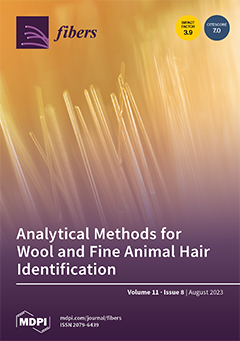Dopamine (DA) plays a crucial role in the functioning of the human central nervous system, participating in both physiological and psychological processes. It is an important research topic in biomedical science. However, we need to constantly monitor the concentration of dopamine in the
[...] Read more.
Dopamine (DA) plays a crucial role in the functioning of the human central nervous system, participating in both physiological and psychological processes. It is an important research topic in biomedical science. However, we need to constantly monitor the concentration of dopamine in the body, and the sensors required for this usually require good sensitivity in order to achieve fast and accurate measurements. In this research project, a CeO
2 and CuCrO
2 composite nanofiber was prepared for the electrochemical detection of dopamine. Coaxial electrospinning techniques were used to prepare CeO
2–CuCrO
2 composite nanofibers. The characterization techniques of X-ray diffractometer (XRD), Raman, and X-ray photoelectron spectroscopy (XPS) were used to analyze the composite’s crystal structure, vibrational bonds, and elemental composition, while SEM and TEM were used to analyze the composite’s surface structure, morphology, and microstructure. The prepared nanofiber outer layer was found to have an average thickness of 70.96 nm, average fiber diameter of 192.49 nm, and an average grain size of about ~12.5 nm. The BET analysis was applied to obtain the specific surface area (25.03 m
2/gm). The proposed nanofiber-decorated disposable screen-printed carbon electrode acted as a better electrochemical sensor for the detection of dopamine. Moreover, the electrocatalyst had a better limit of detection, 36 nM with a linear range of 10 to 100 μM, and its sensitivity was 6.731 μA μM
−1 cm
−2. In addition, the proposed electrocatalyst was successfully applied to real-time potential applications, namely, to the analysis of human urine samples in order to obtain better recovery results.
Full article





